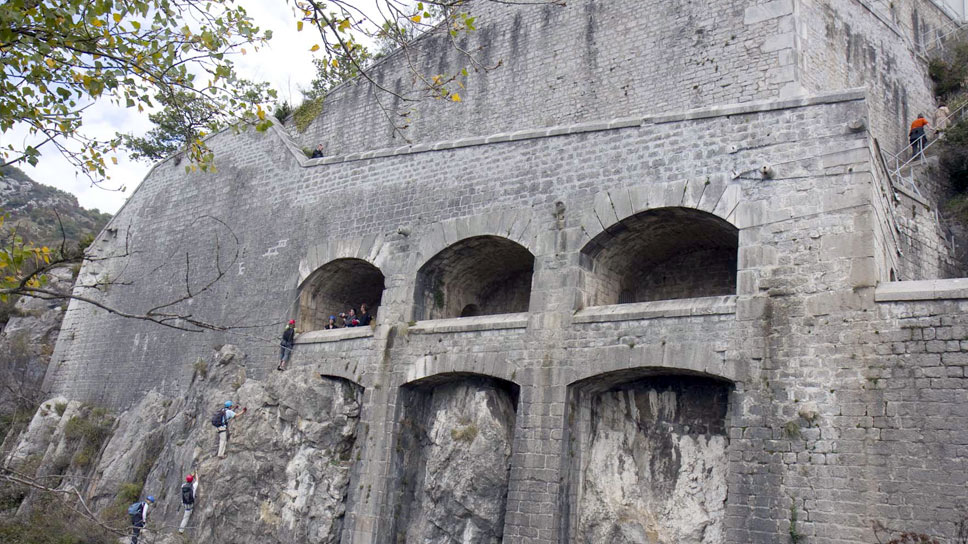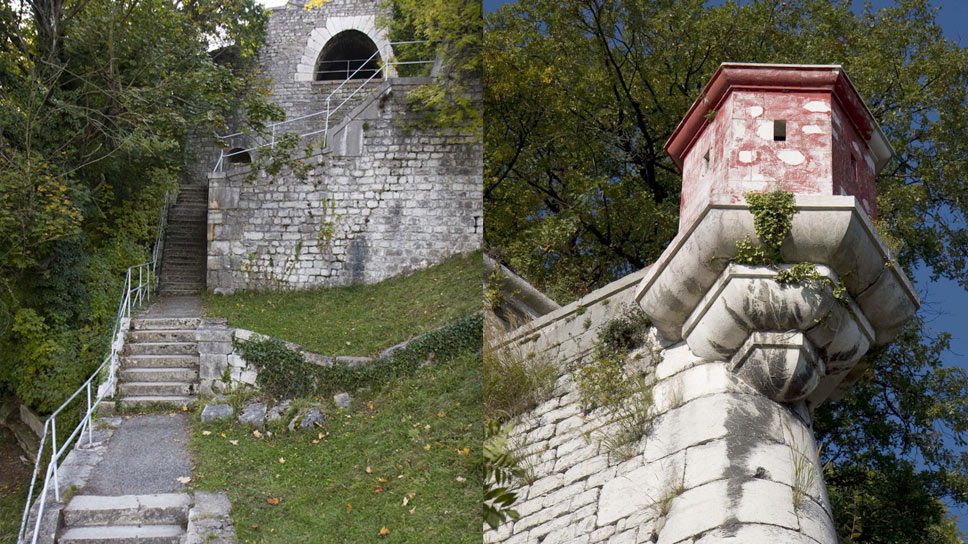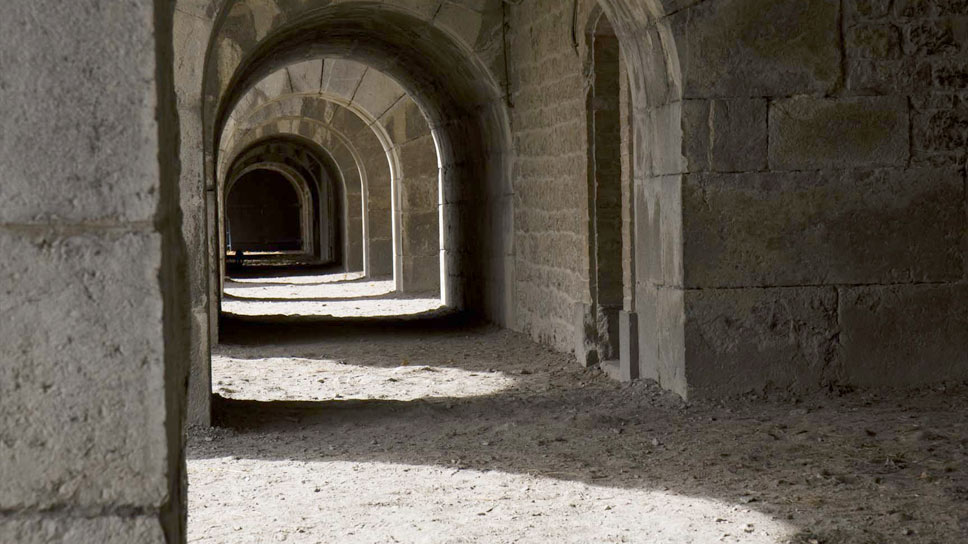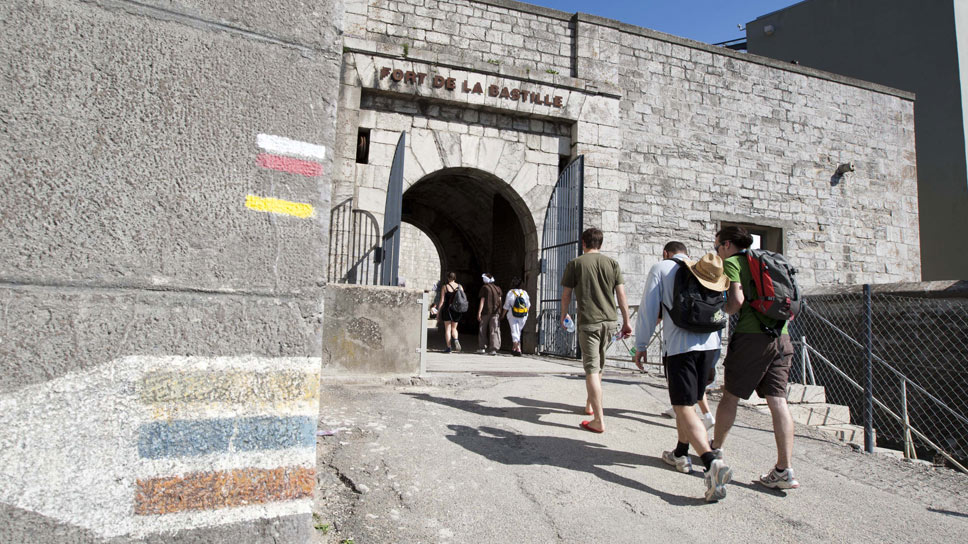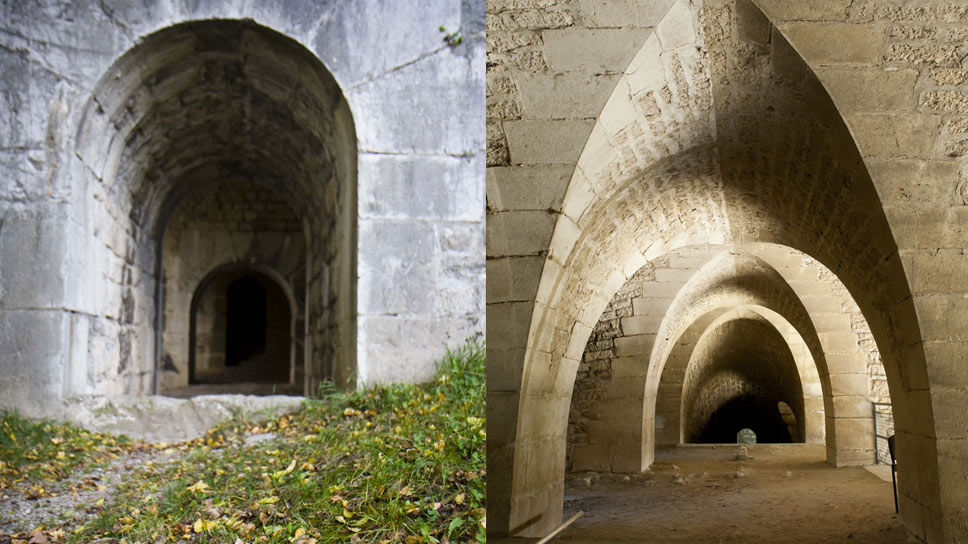Fortified heritage
The city of Grenoble has shared its history with the Bastille site for over 2000 years. The Bastille is a mighty limestone rock that has been transformed over the centuries.
The impressive military construction found here today was built between 1823 and 1848. The remarkably well-preserved ensemble of fortifications was designed to counter an attack on the Dauphiné by the Duchy of Savoy from the Chartreuse, location at the time of the border between France and Piedmont.
One of its highlights is the 16th-century watchtower built when Lesdiguières was constructing the first fortification. We also cross paths with the shadows of Vauban and General Haxo, the latter of whom was responsible for creating the defensive system visible today.
This fortified complex was never stormed and the only time it came under fire was in 1944. It is now on the supplementary register of historic monuments.
Abandoned for good by the army in 1940 and after the installation of the first urban cable car in 1934, the Fort gradually became a popular place for a stroll and a remarkable tourist attraction thanks to its exceptional view over the city of Grenoble and the mountain ranges.
-
The Bastille stronghold is visited on foot. The keep is where the upper cable car station is located. It is the heart of the defensive system. Built in the 19th century to ward off enemy attack from the Chartreuse, it comprises a fortified cavalier gun emplacement, a moat, a glacis slope and some set-back caves called “Mandrin” caves. From the keep, two walls descend the slopes of the Bastille containing gun emplacements, firing positions and stairs.
Each of these fortified branches connects to the former city gateways of Porte de France and Porte Saint-Laurent.
From the lower keep, a wall with ravelins descends the slope sideways to enclose the western part of the mountain and form the “Rabot Citadel”, now converted into a university residence.
When viewing the Bastille from the city, all that can be seen is its back, which makes it hard to gain a true impression of it. It was, indeed, designed to ward off an attack from the mountain or slopes. That is why it was built to direct fire towards the rear and sides, and not towards Grenoble.
-
Natural heritage
The Bastille has also long been known to and well-travelled by naturalists. South-facing, its vegetation combines Alpine and southern species that are home to a wide variety of birds and insects. It is on the list of sites of outstanding natural beauty.
With its northern exposure, the Bastille is home to an astonishing vegetation combining 200 Alpine and Mediterranean species. It is a classified natural area of ecological, flora and fauna interest and the slopes and shrubs of the Bastille, Mont Jalla and Mont Rachais are home to one of the richest “southern colonies” in the Grenoble area. More than 30 species live on the Bastille site. The diversity of its environments also makes it the host to remarkable wildlife.

FREQUENT VISITS BY THE ALPINE DAHU
Grenoble City’s Green Spaces Services work constantly to improve the paths and maintain the walls, cliffs and wooded and flower-filled spaces of this exceptional site. Let us all do our bit to keep this space one of relaxation, contemplation and discovery, by acting responsible at all times.


